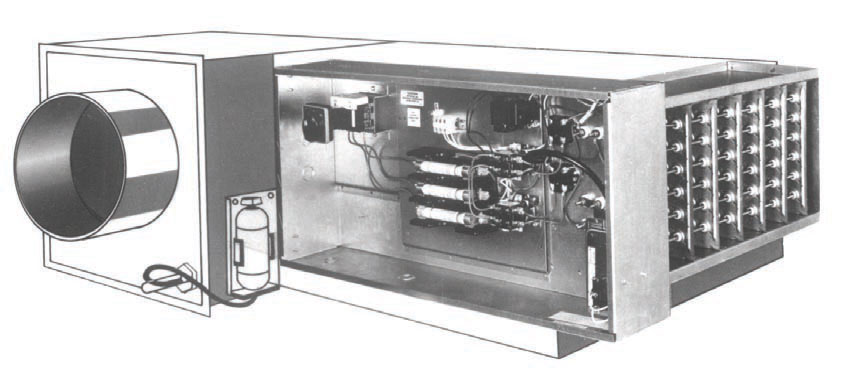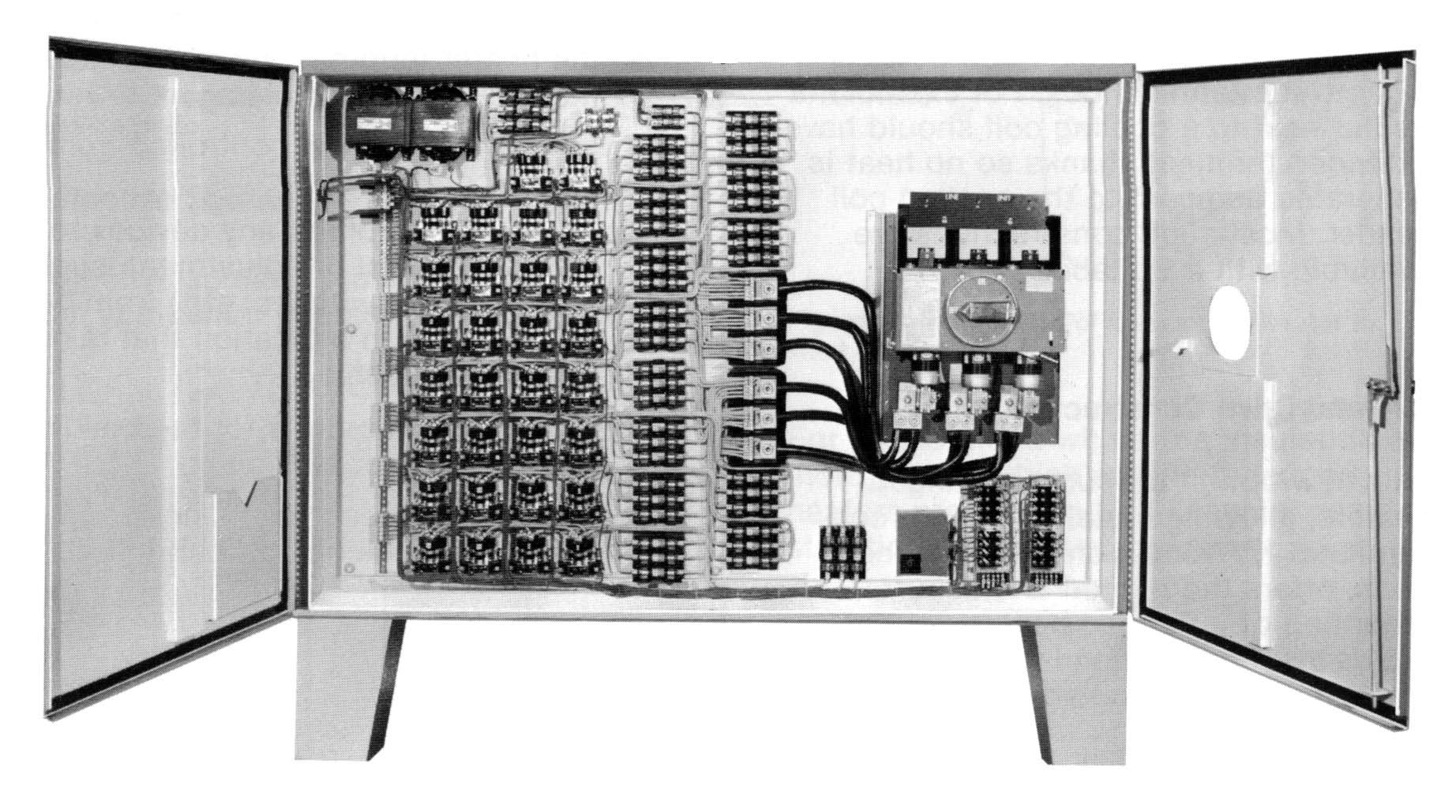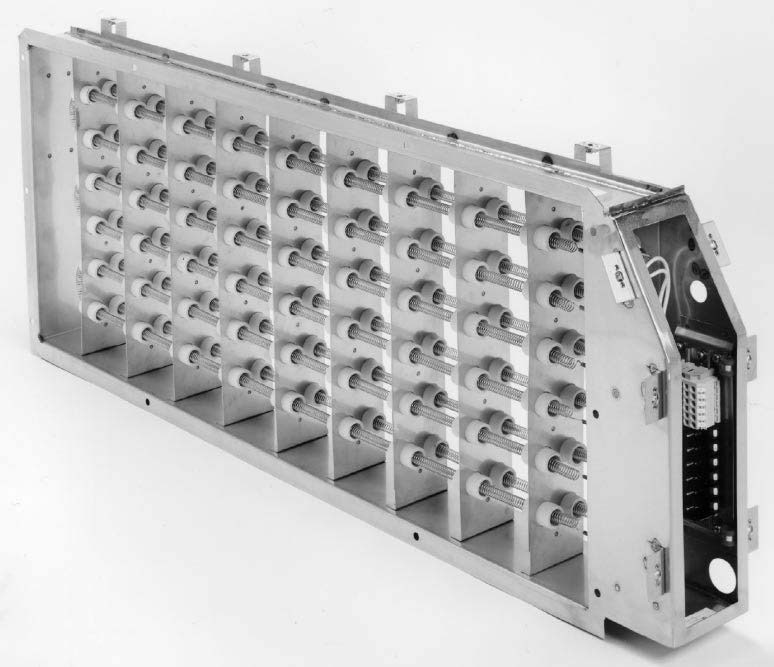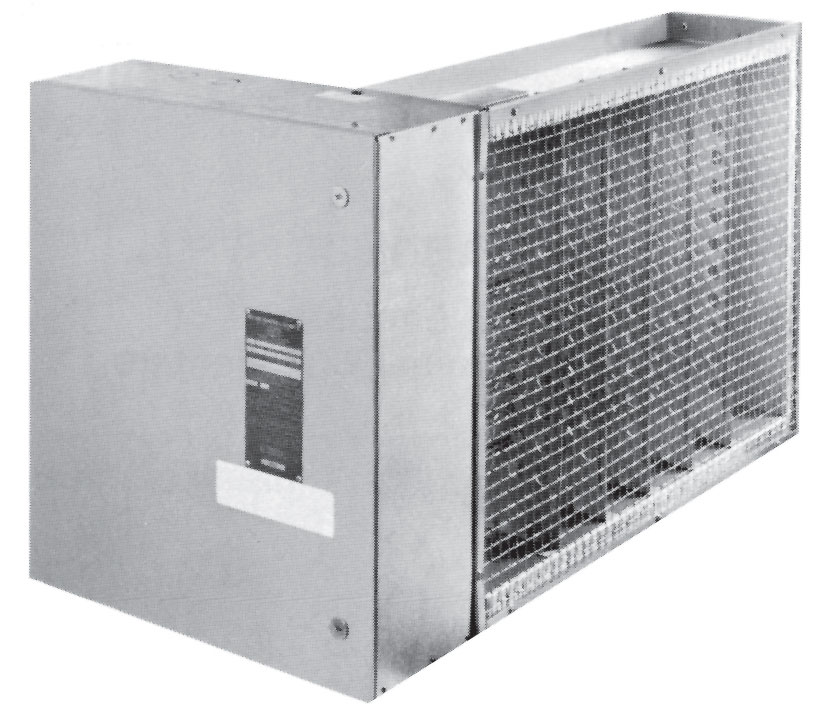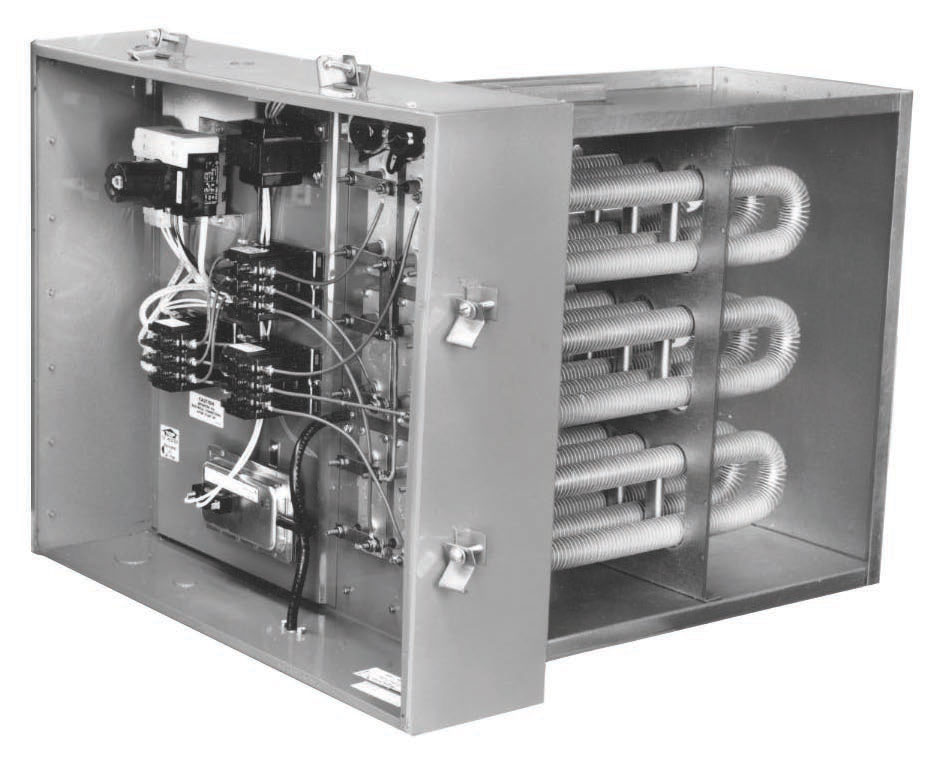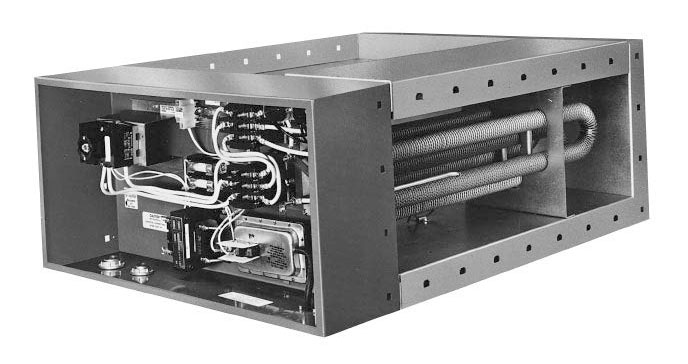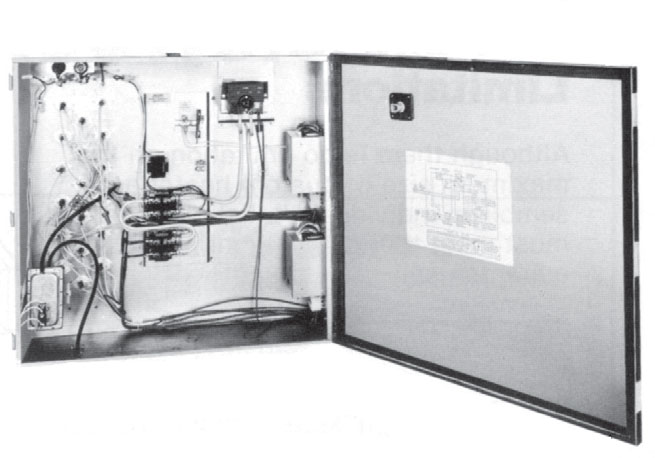Description
Duct Heaters for Wet, Dusty and Corrosive Areas
Indeeco offers a wide selection of custom built electric duct heater designs for outdoor, wet, dusty, and corrosive areas. Typical applications include use with roof top air handling equipment, in washdown areas such as food processing plants, wet and humid spaces near indoor swimming pools, and marine or casino boat applications including shipboard use.
Features:
- Disconnect switch with door interlock
- Manual reset thermal cutout
- Automatic reset thermal cutout
- Stainless steel frame
- Large diameter stainless steel finned tubular heating elements
- Heavy duty control transformer
- Fusing per NEC
- Airflow switch
- Stainless steel terminal hardware
Outdoor UL Listed 3R
Outdoor type 3R heaters are intended for outdoor use to provide a degree of protection against falling rain, sleet, and external ice formation. UL Listed 3R heaters can be used in most HVAC outdoor applications and indoors for protection against dripping water. Water-tight hubs for incoming power and control connections are furnished.
Dust-tight Construction
A dust-tight terminal box is available to meet local codes that require dust-tight construction for a heater installed above a false ceiling when the entire area is used as a return air plenum. It is also suitable for commercial or light industrial applications and to avoid dust accumulation inside the terminal box while a building is under construction.
These boxes are spot welded corrosion resistant steel, with all openings sealed. The hinged cover is gasketed and hold-down clamps are provided. (Note that this construction does not meet the more rigid requirements of NEMA 12 described below).
NEMA 12 Type Terminal Box
For heavy duty industrial applications involving both dust and oil, NEMA 12 construction is available on custom heaters. The all welded, stainless steel terminal box has a hinged, gasketed cover with hold-down clamps. Scru-tite hubs for line and power connections are included.
NEMA 4 Type Terminal Box
For weatherproof locations and washdown areas, such as food processing plants, a NEMA 4 Type construction is available. This all welded stainless steel enclosure is furnished with a hinged, gasketed cover and is provided with water-tight hubs for incoming power and control connections.
Bottom Mounted Terminal Box
The NEC requires a work space at least 21/2′ (76.2 cm) wide by 3½’ (10.67 cm) deep in front of a heater terminal box for service access. More space is required for large heaters. When this space is not available at the side of a duct, the heater can be installed through the bottom, using a special bottom mounted terminal box construction, which maintains the required horizontal orientation of open coil resistance elements.
Custom heaters of either flanged or slip-in design are available with this feature. However, slip-in is normally preferred for ease of installation. UL Listed heaters are limited to the sizes indicated in Table XIII.
Insulated Terminal Box
When the heater is installed in an air conditioning duct which runs through an un-airconditioned space, condensation may form inside the terminal box. To eliminate this condensation or for energy conservation, the back of the terminal box can be factory insulated. This construction is available with all heaters.
Pressure Plates
A 40% open pressure plate on the inlet side of open coil type heaters evens out the airflow pattern in installations where it is not uniform. A pressure plate significantly increases the pressure drop across the heater. This increase must be considered in sizing the fan motor. To assure correct plate location, specify the exact airflow direction.
Protective Screens
Protective screens protect personnel from accidental contact with electrically hot open coil elements and prevent large airborne contamination from reaching the elements. The 3/8″ (9.5mm) wire mesh screen may be mounted on both sides of the heater. Finned tubular duct heater construction may be more appropriate for these applications.
Unheated Sections
Indeeco custom heaters can be supplied with unheated sections, either open or blocked off. Such constructions are particularly helpful when the heater frame must extend through an area with little or no airflow to maintain accessibility to the terminal box. For example, a heater next to a cooling coil should have extended terminal pins so no heat is generated adjacent to the cooling coil header. Most constructions are available with a UL label.
Construction For Lined Ducts
All Indeeco slip-in heaters are suitable for use in ducts lined with up to 1″ (25.4 mm) of interior insulation. Extended terminals and the design of the thermal cutout system make standard slip-in heaters suitable for such installations without any deterioration in performance or life. Be sure that the duct dimensions specified are those inside the duct lining.
For slip-in heater applications where the insulation is more than 1″ (25.4 mm) thick or where flanged heaters are required. Dimensions inside the insulation must be specified as well as the insulation thickness.
Slip-and-Drive Construction
This option for custom flanged heaters, allowing installation with conventional HVAC slip-and-drive connections, offers the rugged and secure mounting of a flanged heater, yet requires less installation labor than a slip-in heater. It is particularly useful when other equipment in the duct system uses slip-and-drive connections, as the contractor can standardize throughout.
By using Indeeco’s slip-and-drive construction in variable air volume (VAV) units, the manufacturer can offer the same standard VAV box for electric heat, hot water heat, or no heat.
Remote Panelboard
When specifying remote panelboards, we recommend the following changes in control and safety components to insure the safety of the installation and to minimize the field labor costs.
- Contactors – Use disconnecting controlling contactors which break all ungrounded lines. Thus, when heat is not being called for, all terminals in the heater will be dead.
- Pilot Switch – Add a dead front pilot switch to the heater terminal box to make it safe for servicing by simply tripping the pilot switch. This shuts off power to the heater circuits through the disconnecting contactors in the panel.
- Fuses – Built-in fusing for each panelboard will be in accordance with UL and NEC requirements.
Except for SCR’s, which are mounted through the panelboard side wall, control components are mounted on a sub-panel. Labeled terminal blocks are provided for all field wiring, both in the panel and in the heater. Knockouts and wiring gutter spaces are supplied in all panelboards.
NEMA 1 panels are made from heavy gauge steel, welded and painted (as required), and are provided with a lock and key. Wall mounting, flush mounting, or floor mounting on legs are available.
NEMA 3R type panelboards for outdoor use are UL Listed. These are intended for outdoor use to provide protection against falling rain, sleet, and external ice formation.
NEMA 4 and NEMA 12 panelboards for outdoor, dusty, and oil atmospheres are also available, as well as explosion-proof panels furnished with cast aluminum enclosures.
All standard type QUA and QUZ heaters are available with remote panels. Panels for these standard heaters are available in NEMA 1 wall mounting only. Fusing, disconnecting contactors, and a heater-mounted pilot switch, all as described above, are supplied.

